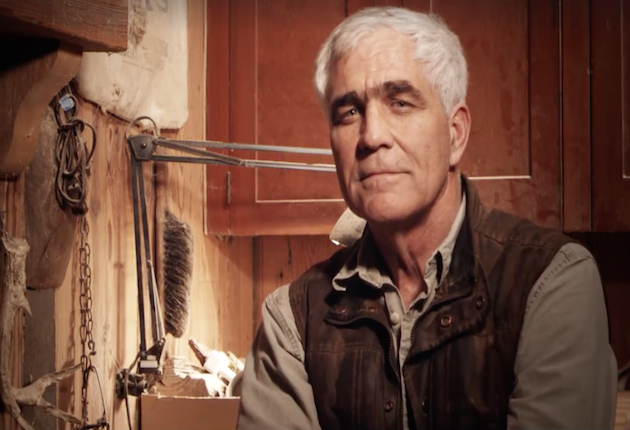For 46 years South Carolina native Grainger McKoy has turned wood into wings. His carvings of birds at rest, in flight, and in conflict with nature are well known to both hunters and birders. The detail is extraordinary, enough so that at first glance many pieces appear to be taxidermy. In typical modesty and humor, he says “All I do is remove wood. How I make a living is I know when to stop.”
Possibly his most prominent piece is a carving of a pintail wing, originally commissioned by the Hollings Cancer Center in Charleston. The upright sculpture captures the wing in its recovery stroke and is accordingly titled “Recovery.”
“Over the years, having looked at photographs and watched film of birds in flight, the recovery position seemed to be the one with the most beauty and the one that was the most intricate,” says McKoy. “Yet it’s the weakest wing position. Weakness is where the truth comes out, and all of us, somewhere in our lives, are in recovery.”
Many of his wood carvings have later been cast in various metals. This was the case when a botanical garden asked for a larger version of “Recovery” for outside display. The model was initially done in wood in multiple parts, taken to a foundry where each was individually cast in stainless steel, then welded together. The assembled metal wing, over 12 feet tall, was returned to McKoy for the finishing touches.
An offshoot of his sculpture began when he carved a few small birds and feathers, casting them in silver and gold for his wife to wear. People soon asked where they could buy these pins and earrings, and before long it became a business in itself. McKoy hints that, as far as his time and efforts are concerned, it’s not likely to overshadow the larger carvings any time soon.
“Quite frankly, I don’t know anything about jewelry. I just know half the world wants it and the other half’s gotta give it to them.”
His work will be on display at the Greenville County Museum of Art through July 2017.

“Recovery” in a sterling silver pin being worn as a necklace.
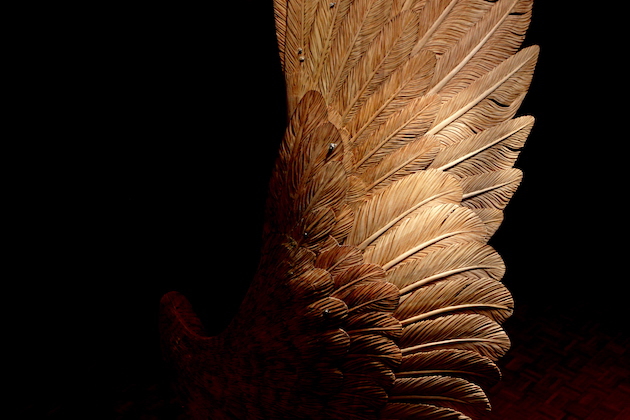
Full-scale wooden model of “Recovery,” used to make the molds from which the stainless steel final version was cast. Approximately 45 parts make up the model, which is held together with nuts and bolts when on display.
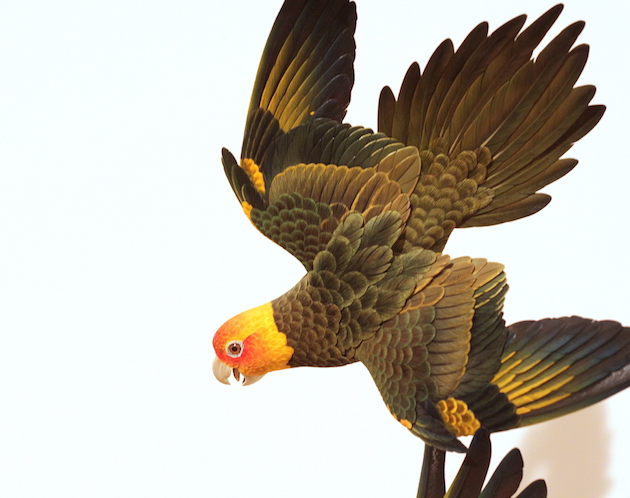
Closeup of Carolina parakeet.
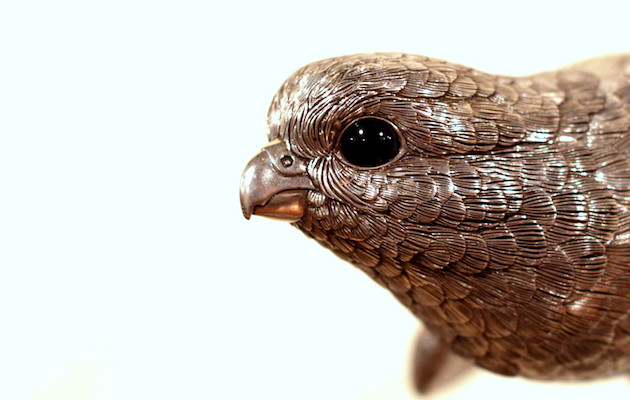
Kestrel in sterling silver.

Hawk with copperhead.

Sketch showing dimensions and shape of “Recovery.”
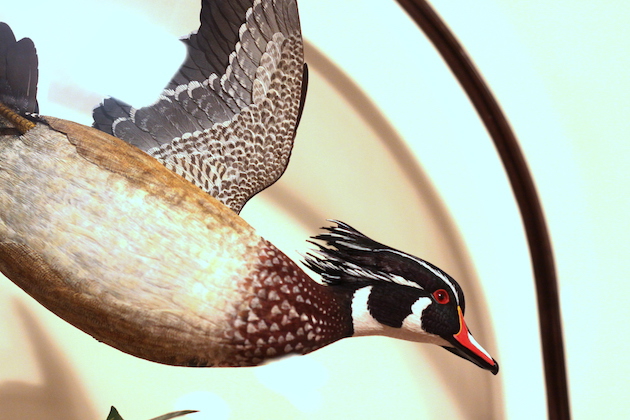
Wood duck.
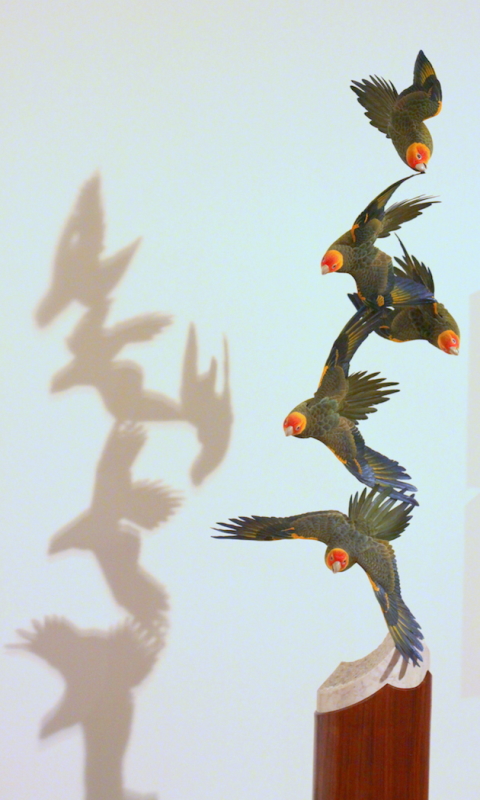
Carolina parakeets carved in basswood. The primary feathers on each bird are carved from steel to provide the structural support.
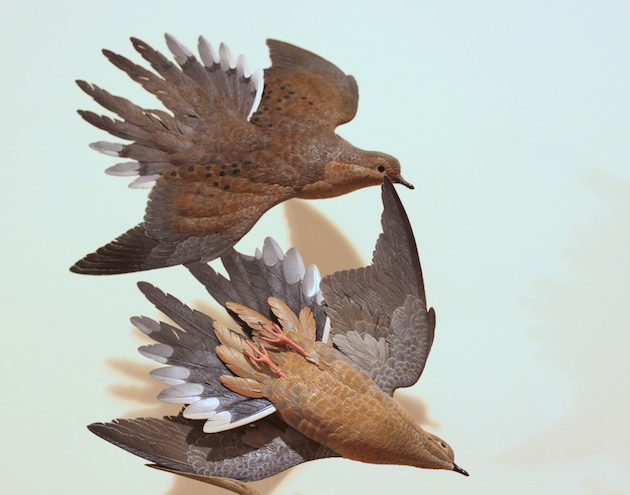
Mourning dove in flight carved in basswood.

Full model of flushing bobwhite covey.

The second stage of most pieces is a rough wooden carving. McKoy loves to talk about “process,” and this is part of the process of making inspiration into reality. These wooden models end their evolution in this state, never becoming the final piece itself. This is detail from a model of a covey of bobwhite quail flushing.
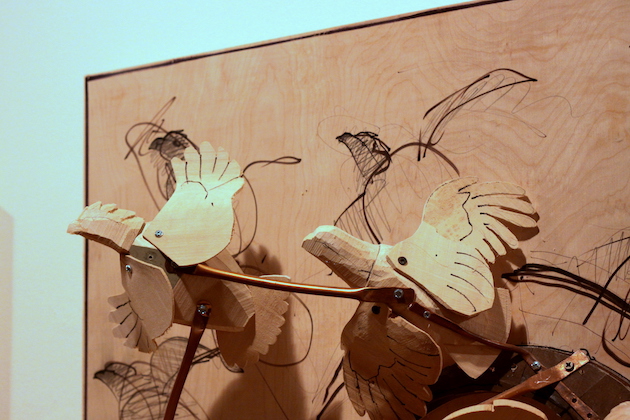
Pair of bobwhites from the model of covey flushing.
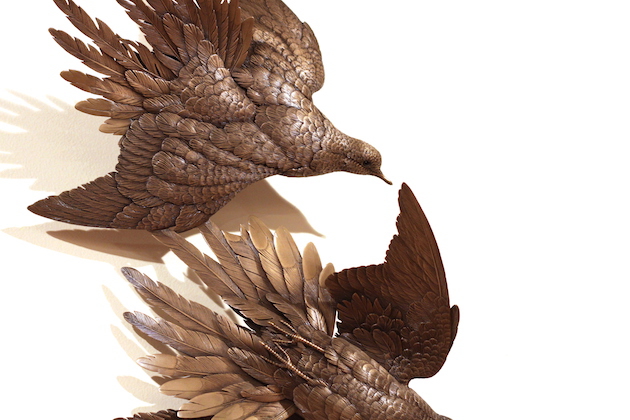
Doves in flight cast in bronze.

Purple gallinule peeling back a lily pad and reflecting on its image.
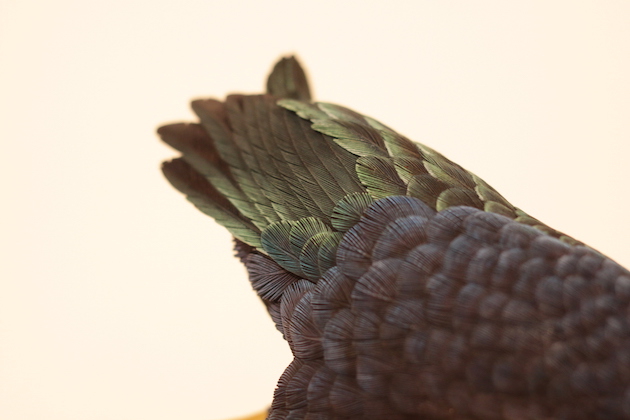
Detail on Purple gallinule.
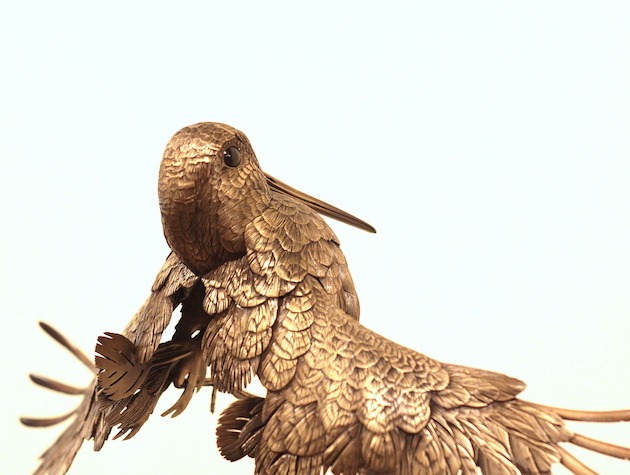
Woodcock in bronze.
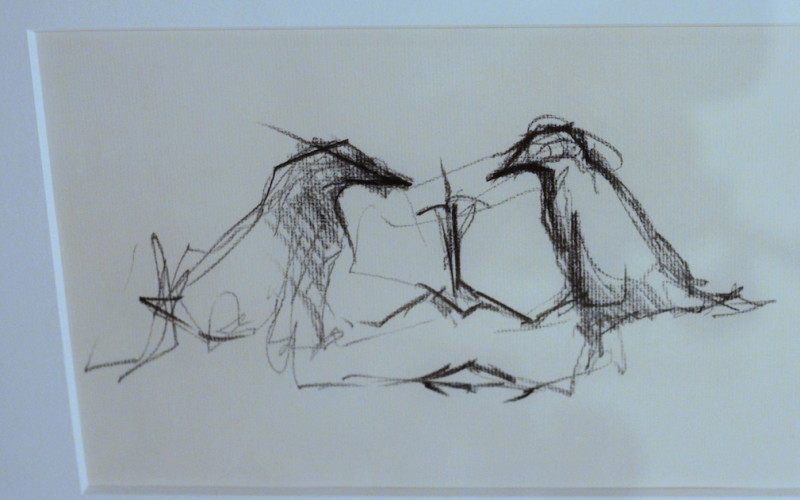
Most of McKoy’s works begin as sketches. This is the concept that became the Purple gallinule reflection.
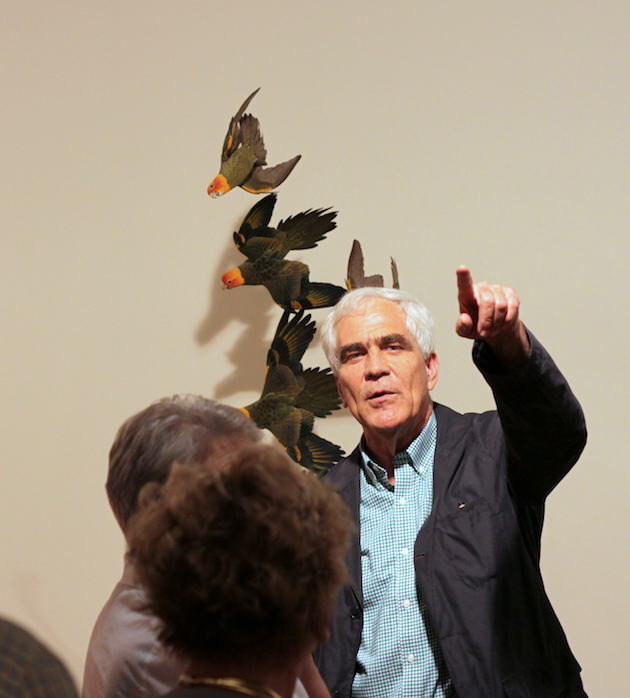
Grainger McKoy speaks to patrons in front of a carving of Carolina parakeets.

